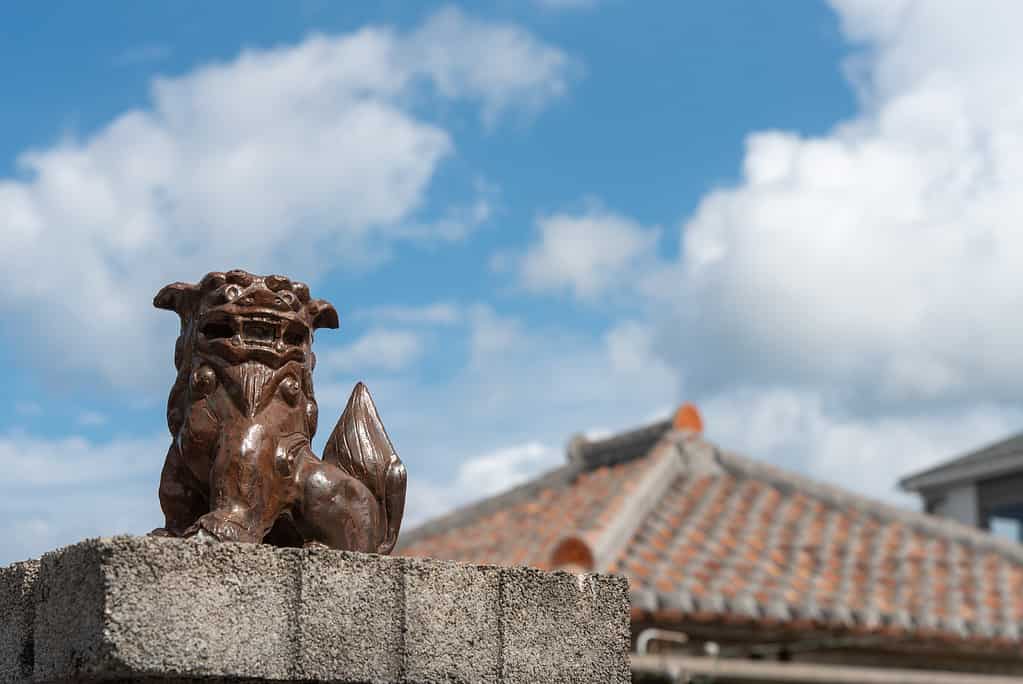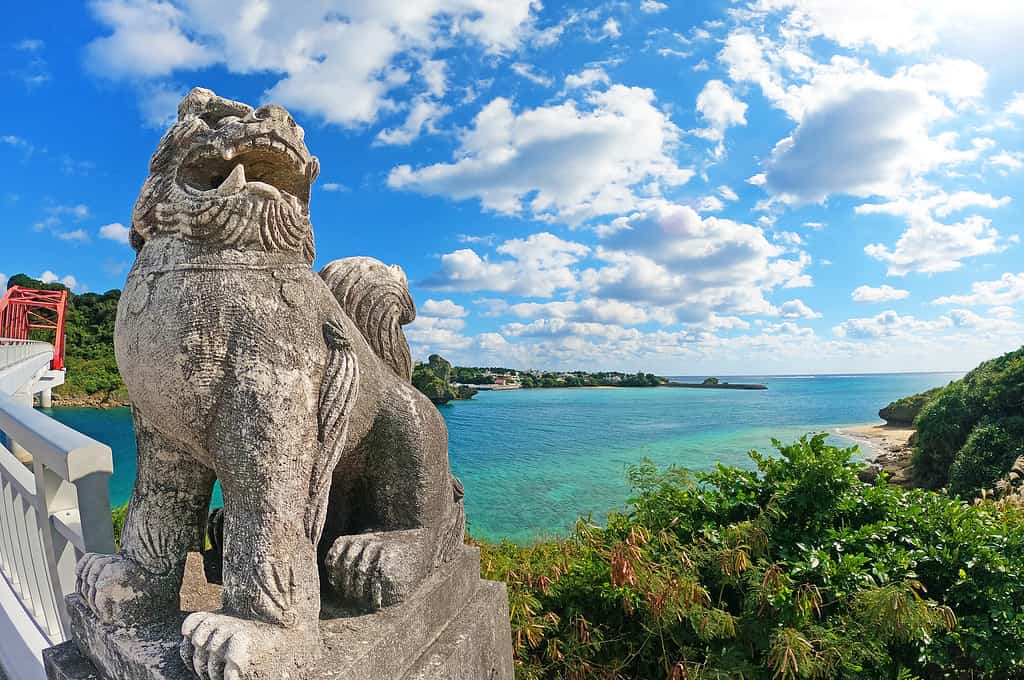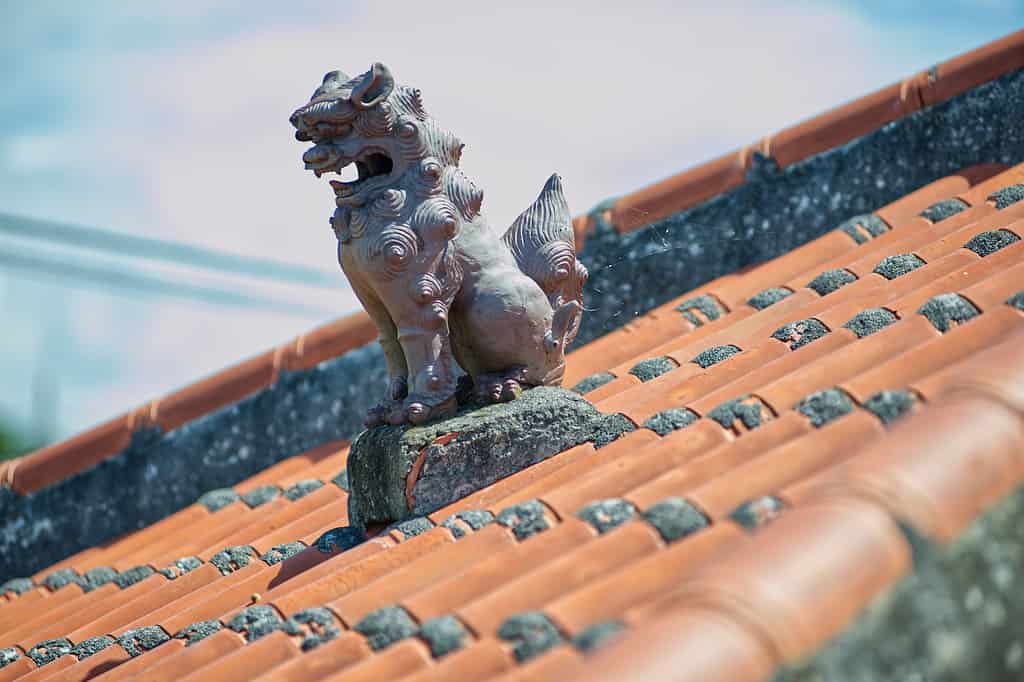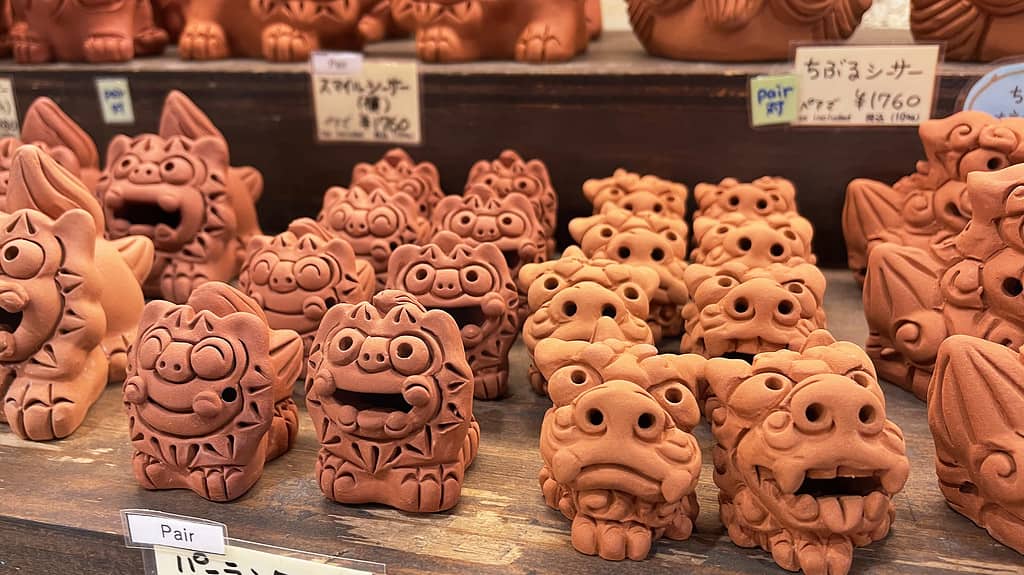
In artwork, Shisa are usually depicted as happy creatures to make them more appealing to strangers.
©tada/iStock via Getty Images
Myths are traditional stories discussing the early history of a people’s culture. While some accounts may be influenced by historical events, others are made to help explain the natural world. The Shisa is a mythical animal that encapsulates both of these ideologies because of its prominence in Asian culture.
Shisa statues can be found outside of businesses, inside offices, homes, and in gardens throughout Okinawa and other parts of Japan. Small shops sell these statues for families to give as gifts. But what makes these unique statues so important? What is a Shisa and why are they so popular?
Brace yourselves because the legend of the Shisa starts with a roar.
What is a Shisa?

Expensive statues are placed in temples, while common metal statues are used for residential spaces.
©tacamuro/iStock via Getty Images
Shisa statues represent the mythological animal of the same name. They are a chimera (hybrid animal) of a lion and a dog combined. There is no direct understanding as to how this specific animal was born, but every culture has their own version of chimera across the world.
These statues are most prominent in Okinawa, one of the main islands of Japan. However, other countries have variations, like “shishi-san” which translates to “Mr. Lion.”
There are two types of Shisa:
- Males: Males have open mouths and sit on the right.
- Females: Females have closed mouths and sit on the left.
Legends of the Shisa

The Ikei Ohashi Bridge between Miyagi Island and Ikei Island has Shisa statues to protect travelers.
©cf2/iStock via Getty Images
Shisas are famous because of their popular and simple folktales in Okinawa.
Legend tells the village of Madanbashi in Naha Port was under attack by a fierce dragon. Villagers fought valiantly to combat the beast, but their efforts were all for naught as brave farmers fell to the dragon’s overwhelming might.
One day, the King of the Ryukyu archipelago came traveling along and met a priestess from the suffering village. She saw the king was wearing a necklace of a Shisa named Iri-nu. The priestess told the king of the villager’s plight, requesting his aid. Agreeing to lend assistance, the king followed the priestess back home while the dragon was attacking.
The priestess told the king to hold his necklace to the dragon. A loud roar emerged from the necklace, shaking the land. Some iterations say a rock fell from heaven, crushing the dragon’s tail where it starved to death. Other stories say a Shisa emerged and turned into a rock which crushed the dragon’s tail where it starved to death.
The dragon’s body would eventually become Gana-Mui Forest.
Every year on August 15th, the prefecture of Madanbashi hosts a festival honoring the legend by praying and offering fits of fruit and money to the Iri-nu shisa statue.
Importance of Shisa

Okinawa uses Shisa imagery in its promotional material for tourism.
©MichikoDesign/iStock via Getty Images
Legends of the Shisa are so popular that these creatures are widely seen as guardians of Okinawa. The animal is synonymous with the region and its protector status. Families and businesspeople give statues to one another as a sign of good fortune and protection against evil.
Historical Significance
One of the oldest and largest Shisa statues is the Stone Lion of Tomori. Erected in 1689, it is 5.5 feet high by 4.5 feet long.
The town of Tomori was suffering from fires from the local volcano. A priest informed the villagers to place a statue facing the volcano and the volcano would cease. The villagers listened, and the fires stopped.
Later, in 1945, a fierce battle in Okinawa killed thousands and destroyed dozens of homes. However, the statue remained strong, despite suffering from several bullet holes. The Tomori lion is now a cultural asset and an important piece of Okinawan heritage and folklore.
Spiritual Significance

In Shintoism, everything has a spirit. Shisa statues have the spirit of the protector to combat evil spirits.
©rylan9/iStock via Getty Images
The male and female variants offer different levels of protection as well:
- Males open their mouths to chase away evil spirits and prevent them from entering, mimicking the legend of Iri-nu Shisa defeating the dragon with a roar.
- Females have closed mouths to keep the good energy within the home, ensuring the inhabitants inside are always protected.
Several statues have a Shisa holding a golden orb in their paws. Historically, gold is valuable and a sacred color linking the mortals to the gods or divine realm. The gold orbs symbolize good fortune, luck, and health. Thus, the golden orb shows that the homeowner’s or business owner’s luck and wealth are safely guarded.
It is customary to ensure that these powerful statues are always clean and free from dirt and dust.
Shisa in Modern Day

Souvenir sculptures of Shisa are popular at stands and shows as little and affordable gifts.
©cf2/iStock via Getty Images
Legends of the Shisa are still shared to this day across Okinawa and other parts of the world.
Decoration
Shisa statues make excellent gifts for new homeowners, married couples, new business partners, and anyone starting a new venture in the world. Many buildings have Shisa statues on their roof to symbolize the occupants inside are blessed and protected from evil spirits.
Pop Culture
Shisa are popular monsters in fantasy stories as protectors and exotic animals.
Iconic pop culture Shisa depictions include:
- King Caesar from the Godzilla franchise
- Growlithe and Arcanine from Pokemon
- Two vital allies during the final battle in Shang-Chi: Legend of the Ten Rings.
To this day, many Okinawans still pray to their guardian animal for protection when undergoing difficult tasks.

A Shisa on a rooftop is closer to heaven where divine beings reside in Shintoism.
©Nancy Kennedy/iStock via Getty Images
Chimeras are common across the world, but the Shisa is a special chimera because they are devoted protectors with iconic imagery, dedicated to making anyone feel safe. Besides, who wouldn’t want a lion-dog protecting them from evil spirits? The power and strength of a lion with the loyalty and intelligence of a dog make the perfect protector.
The photo featured at the top of this post is © Nancy Kennedy/iStock via Getty Images
Thank you for reading! Have some feedback for us? Contact the AZ Animals editorial team.







